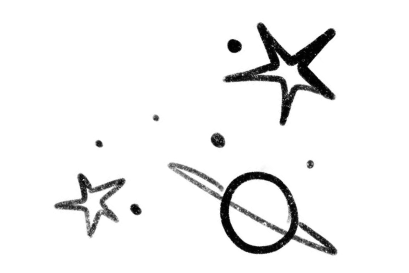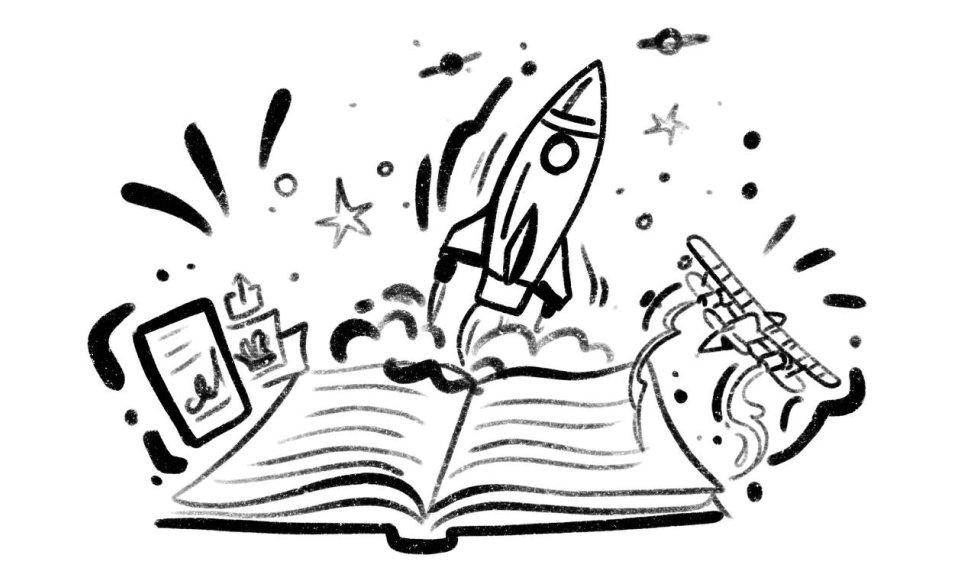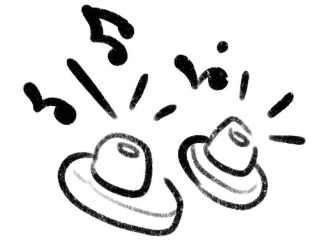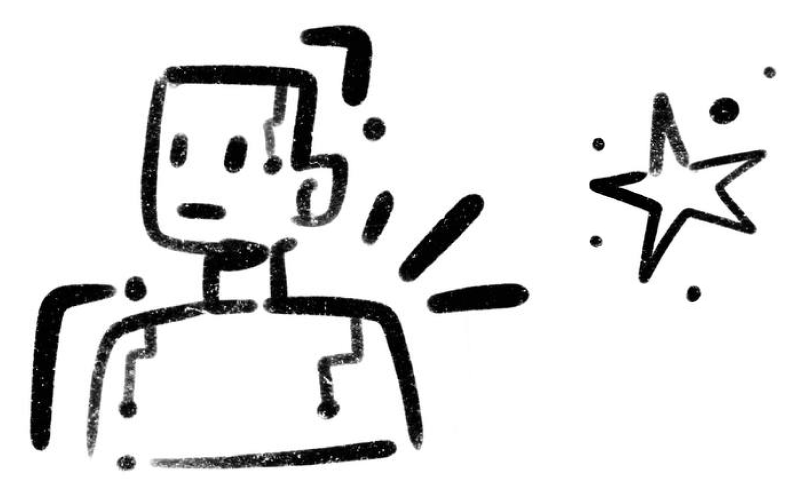Technocratic prophecies: visionaries who predicted the future
A chemistry professor, slightly teasing his wife (a literature professor), would say, “You see, my dear, there are natural sciences, and then there are… unnatural sciences!” Many would smile approvingly at this joke. Indeed, the field of humanities isn’t always about precision. But does that make the study of literature any less interesting, boring, or useless? Of course not! Especially since the lack of mathematical clarity and technical accuracy in artistic creation is compensated by imagination, intuition, and, one might even say, prophecy.
Did Paul McCartney know, when he was composing the music and lyrics for the famous hit “Yellow Submarine,” that long before submarines became an integral part of the navy, they were already written about in a science fiction novel? Could anyone, reading the dystopian novel We, have guessed that the glass walls of the homes, closing in times of intimacy between characters, would be mirrored by the public restrooms in 21st-century Tokyo? With a click, the transparent cubicle turns colourful and hides the occupant inside.
What underpins the psychology of creativity? What is it about artistic talent that allows an author, while contemplating moral issues or crafting captivating stories, to model the future with such remarkable precision?
This year marks the 180th anniversary of the death of the great Russian poet E.A. Baratynsky. The general public, both in Russia and abroad, does not know him well. At best, they’ve heard the name. However, trust the author of this article — he was a great artist. The most famous and beloved Russian poet, Alexander Pushkin, once said that after Baratynsky published his collection of elegies, it was pointless for other poets to even attempt to write elegies — they simply couldn’t do it better than Baratynsky.
But it’s not elegies we’ll be discussing; they’re a bit too far from the scientific-popular theme here. Let’s talk instead about predictions and prophecies.
In his poem The Last Death, the poet imagines a distant future, pondering what might captivate his far-off descendants:
“And fantasy took full possession of their being,
And mental nature yielded
To bodily nature among them:
Their living thought carried them to
Empyrean and chaos
On its wings…”

According to one interpretation, “mental nature,” “fantasy,” “Empyrean and chaos” could loosely hint at the modern Internet. Yes, it lacks specificity, and it’s not indisputable, but many elements of these words resemble the digital consciousness of our contemporaries. Perhaps this example isn’t the most convincing. But let’s take it as a starting point and dive into the sweet world of writerly fantasies, many of which were destined to come true!
We All Come from Childhood. Many of us, immersed in science fiction and adventure novels, once dreamed of becoming astronauts, daring sailors, or treasure hunters. And often, these fantasies had one source — a book of Jules Verne’s works on the shelf. This 19th-century French writer, a hero to generations of children and adolescents, was the founder of the science fiction genre. Decades later, it became clear that many inventions he described in his books have become something ordinary and integral to our reality.
The starry sky has fascinated humanity since ancient times. Astrologers used constellations (and still do today) to predict the future, and Copernicus and his student Giordano Bruno proved that the Earth, first, rotates on its axis; second, revolves around the Sun; and third, is round. Mr. Bruno paid for his scientific pursuits with his life. Romantic poets of the 19th century saw in the twinkling stars a mysterious reflection of a distant and beautiful world, and artists honed their skills depicting the mysterious twilight of a starry night. Jules Verne, however, dared to send a person into distant, mysterious space! And he did so long before the heroic dogs Belka and Strelka, let alone Gagarin. Verne dedicated several novels to space travel: From the Earth to the Moon, Hector Servadac, and Around the Moon. Honestly, it feels like it wasn’t Jules Verne who predicted the era of space exploration; rather, it seems that space exploration began with carefully reading his books! Naturally, with numerous scientific refinements, but in the broadest sense, Verne’s idea was deemed viable: the decision to build a projectile-carriage that would be launched by a cannon. The shot was intended to be so powerful that it would reach the Moon.

Besides the very concept of space flights and moon exploration, which, for the first time in literature, took place not by magical means but based on scientific research, these novels contain several additional predictions. Any search engine will tell you that NASA’s launch pad (the John F. Kennedy Space Center) is located in Florida, on Merritt Island, near Cape Canaveral. This was precisely where Stones Hill’s spaceport was located in Jules Verne’s works. Whether this is a coincidence or NASA’s leaders were avid fans of the French writer, the story is still impressive. Interestingly, the most implausible part to readers wasn’t even the space travel itself, but that the spacecraft would be made of aluminum. In the 19th century, this metal was nearly as expensive as gold. Another parallel is that the crew consisted of three people, a detail uniting classic science fiction and modern spaceflight organization.
If you open Paris in the 20th Century, the surprises continue: “The electric telegraph should have significantly reduced the volume of correspondence, as recent improvements allowed the sender to communicate directly with the recipient; thus, correspondence secrecy was preserved, and major deals could be made remotely.” Those of us who wrote our first emails in the ’90s felt like pioneers, advocates of innovation! And yet, these innovations were forecasted a hundred years earlier!
Or consider this: “…photographic telegraphy allowed for transmitting a facsimile of any record, autograph, or drawing over any distance, as well as signing bills of exchange or contracts thousands of leagues away.” And we’ve only just begun to fully and widely use digital signatures, and illustrators can work remotely. Other passages in this novel describe people communicating via video calls. There’s also a description of how television works. In this same novel, an execution is depicted, where a powerful electric shock is passed through a person. Thirty years after the book was published, the first execution by electric chair took place in the United States.
But That’s Not All. Nuclear and chemical weapons, long-range artillery — Jules Verne didn’t just mention these, he described them in detail and even explained their principles of operation. Airplanes and helicopters, which also found a place in his novels, were invented during Verne’s lifetime. Yet, he was the one who predicted their military application.
At the end of the 19th century, H.G. Wells’s legendary novel The War of the Worlds was published. In it, Martians quickly and silently kill humans by “sending condensed heat in parallel rays to the object they selected as their target.” It’s worth noting that the first working laser wasn’t presented to the public until half a century later!
In the first half of the 19th century, a brilliant writer, an author of delicate fairy tales and a connoisseur of classical music, Vladimir Odoyevsky, lived in the Russian Empire. Few people know that in his drafts and notes, he often speculated on technological progress and the inventions of the future. He also began work on a futuristic novel, The Year 4338: Petersburg Letters, in which he described high-speed underground transport in detail. A literature professor, an expert on Odoyevsky, once joked that humanity is moving much faster than the author envisioned, since the subway has existed since the end of the second millennium, while in 4338 it appears only at the beginning of the fifth. “We had to leave the electric carriage and humbly walk on foot between piles of meteoric iron. Truly, if the aerolite had fallen a few yards further, the tunnel would surely have burst.” This text seems especially paradoxical compared to the writings of Odoyevsky’s contemporaries, who didn’t even consider science fiction possible in early 19th-century Russian literature; fairy tales were the limit! Of course, we shouldn’t read past centuries’ science fiction as literal prophecies: some predictions are more accurate, while others are only vague hints. For instance, Odoyevsky’s transportation system was far more mobile than the metro and allowed travel between countries. Then again, who knows what the metro will look like 100-200 years from now? Remember that Verne’s aluminum spaceships were also mocked.
It’s impossible to discuss science fiction without mentioning Ray Bradbury. So, let’s recall Fahrenheit 451, beloved by millions. One character remembers his wife with “tiny ‘Seashells,’ thimble-sized…tightly plugged into her ears, and an electronic ocean of sound —music and voices, music and voices — washed the shores of her waking mind.” In my copy, the first part of the quote is on one page, and the second on the next, so during the page turn, I had two seconds to imagine those “Seashells” in my mind. For the “electronic ocean of sound,” I thought of something opposite — earplugs, but the sounds changed the picture entirely — it’s more like a micro-radio.
Or maybe just headphones? Even though the novel was written much later than the works of Jules Verne and H.G. Wells, in 1953, there’s no doubt about Bradbury’s skill in prediction, because at the time of the book’s publication, not only were there no wireless headphones, but there were hardly even any regular ones!

‘But What About Robots?’ you may ask, and you would be right. That’s what we’re about to discuss. First, the very concept of “robot” is itself a kind of prediction. It first appeared in the play R.U.R. by Karel XX apek in the 1920s. These were not quite robots as we envision them today; they were more like “artificial humans.” Created from grown tissues and resembling people externally, they would more accurately be called bio-robots in modern terms.
However, what’s important here is that, like many robots in later generations, the R.U.R. models had no soul. This raised a host of ethical questions that would become associated with this field: is it ethical to exploit them? What are the consequences? Could they develop consciousness?

Today, it’s almost impossible to imagine 20th-century science fiction without robots. We see robots in the works of Robert Sheckley, Roger Zelazny, and Aldous Huxley, to name a few. However, the universally recognized authority remains Isaac Asimov, with his “Three Laws of Robotics” from 1942. Additionally, he took robot stories to a new level. In The Bicentennial Man, we meet Andrew: not just an anthropomorphic robot, but one endowed with self-awareness and even civil rights! Mr. Asimov describes a future that’s not too far off — the story of Andrew is partially echoed by Sophia, the Hanson Robotics robot introduced to the world in 2015. To avoid damaging her complex computer brain, Sophia lacks legs, but her communicative and cognitive skills are astounding! Sophia holds conversations, is witty, learns, knows languages, can quickly find information online, and displays up to 60 (!!!) facial expressions. We may not know if she has self-awareness, but we do know that as of 2017, this “miss” has Saudi Arabian citizenship.
If you think science fiction is only about scientific breakthroughs, the distant future, or intergalactic contact, you haven’t truly read the genre. Visionary science fiction authors explore hundreds of topics: future social models, gender relationships, food and cooking techniques, household gadgets, unusual high-tech clothing, plant care, and more. For example, social forecasting sci-fi and dystopian novels (both Russian and European, many written concurrently) frequently mention medications and devices that now exist as full-fledged treatments, having proven their effectiveness. Once again, we marvel at the talent of these writers and the irony of fate: did any of them suspect that a clever detail would one day be realized and help millions in the fight against disease?
In the novel Brave New World, characters recommend “soma” to one another to relieve melancholy: “Take a gramme of soma,” “A gramme of soma and no more drama.” A close reading reveals that the effects of soma are reminiscent of modern antidepressants.
There are even less obvious parallels! Mikhail Bulgakov’s novella The Fatal Eggs tells the story of a scientist, Professor Persikov, who, while studying embryology, creates a device with mirrors and lamps to provide an ideal environment for embryos. By accident, the device emits a red ray, causing larvae, embryos, and eggs that enter it to reproduce at ten times their normal rate and grow tenfold in size. The Fatal Eggs has been extensively studied by literary critics, and it’s widely accepted that the red ray symbolizes the 1917 revolution and the rapid transformations in the young Soviet Republic. However, for us today, we can set aside the historical parallels. The association comes naturally — the red ray bears a strong resemblance to modern radiation therapy.
And then there are the rejuvenating experiments of another Bulgakov character, Professor Preobrazhensky, from Heart of a Dog, which involve literal organ transplants, specifically xenotransplants (between species). For example, the professor transplants a monkey’s ovaries into a female patient and a human’s pituitary gland and testes into a dog. Here, again, we find a prediction, possibly beyond the author’s intentions: Heart of a Dog presents the theme that any forced intervention in natural processes is dangerous and, most importantly, unnecessary. But this thematic level of the story does not negate the fact that such operations became routine decades later.
Medical Predictions by A. Belyaev. It’s worth separately discussing medical predictions in connection with Alexander Belyaev, whose books have been translated into 41 languages. What makes his name unique in this context is that his works are filled with visions of medical advancements, though this is not always their primary focus. In his most famous novel, Professor Dowell’s Head, philosophical and ethical themes take center stage. The professor’s ambitious student, unwilling to share glory with his brilliant mentor, betrays him, keeping only the professor’s head alive in his laboratory — sustaining it by means of artificial breathing and nutrition. The reader sympathizes with the professor, rejoices when the treacherous student is punished, and marvels at the author’s imagination. Decades later, it became clear that Belyaev was essentially describing early transplantology and an analog of the heart-lung machine.
Of course, the list of technological predictions is endless because science fiction is an immensely popular genre, and there are hundreds of scientific and technological advances that were anticipated in literature long before they came to fruition. Many writers seem to have an extraordinary intuition, foresight, or gift of prophecy, predicting not only inventions but also historical events, elements of their own lives, and the existence of social models (think of George Orwell’s 1984). Moreover, scientific predictions and prophecies appear not only in modern literature but also in sacred texts like the Bible, the Quran, and the Torah. In fact, this topic alone could fill multiple articles. But what truly interests us is the mechanism behind these scientific predictions. Why do some stories remain confined to the pages of books, while others become part of our daily lives? Is there a way to measure this talent?
On the one hand, Jules Verne, with whom we began this discussion, claimed there was nothing extraordinary about an author’s predictions; he closely studied scientific developments and speculated about what could be invented in the near future based on the technologies already known. There are also the opposite stories: young scientists, inspired by the works of a childhood favorite, set out to bring a fictional idea to life. But then there’s a third path: a book is written, and years later, some aspect of it becomes reality — without any interaction between the writer and the engineers. It’s simply how things unfold. The magic of a writer’s gift, if nothing else.
Science fiction novels continue to be written, and today they feature such advanced science and technology that even we, people of the third millennium, find them fantastical. Will some of today’s imaginative concepts be realized and patented in the near future? Or maybe in the distant future?
It seems we’ve found a way to decode Einstein’s unknown equation.
Thank you!




